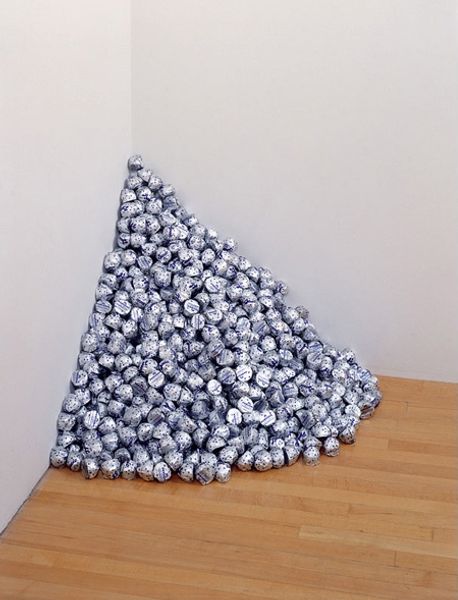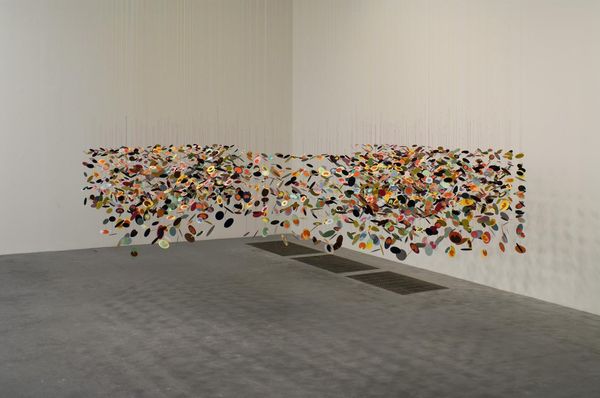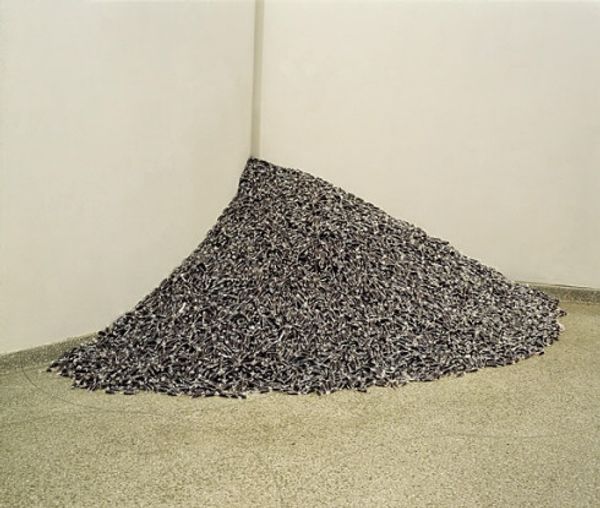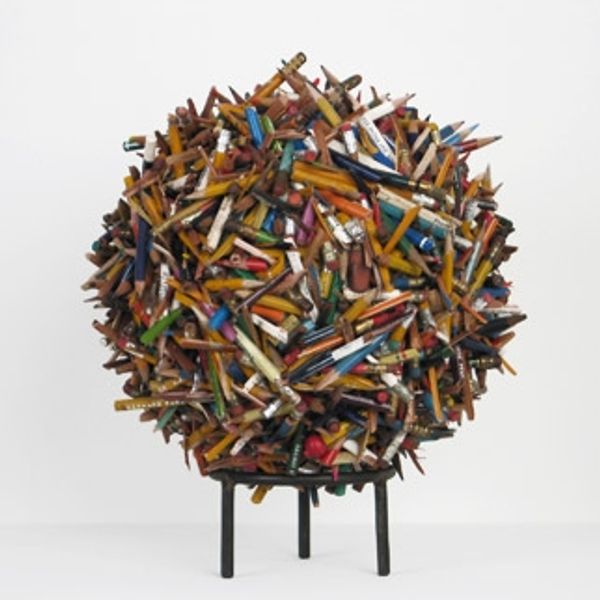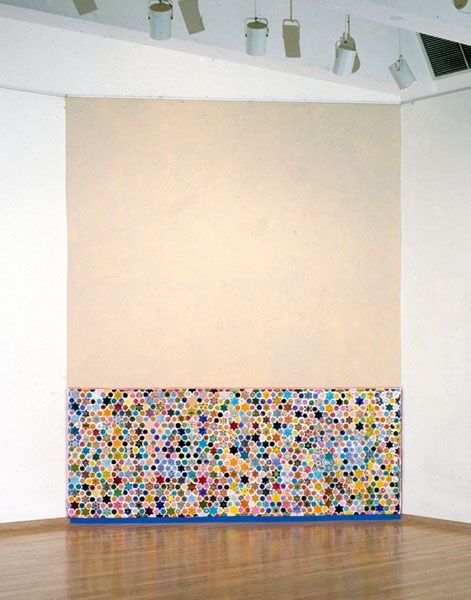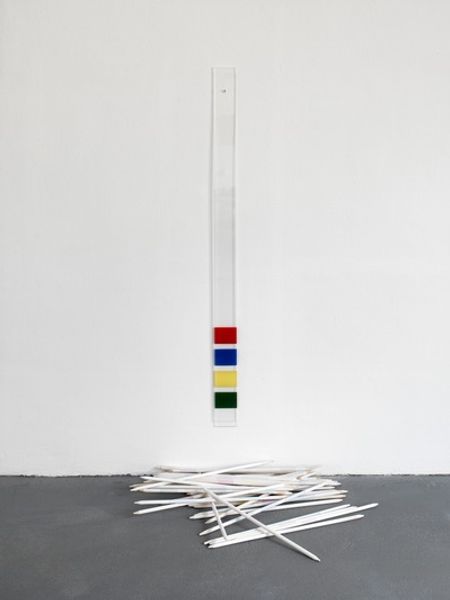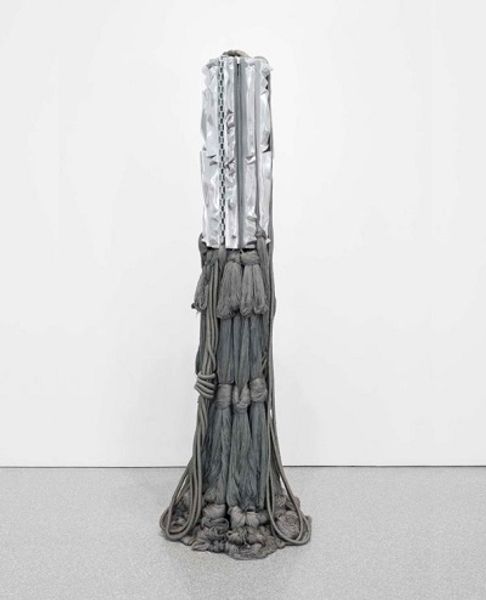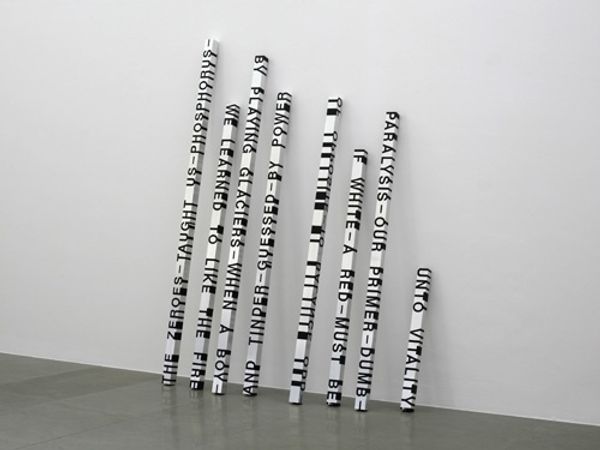
Copyright: Felix Gonzalez-Torres,Fair Use
What is a portrait? 👨 When you first hear the word, you probably imagine a conventionally realistic painting of a person’s visual likeness. In his ‘Untitled Portrait of Ross in L.A’., however, the artist Felix Gonzalez-Torres (1957–1996) rejects traditional techniques and ideas of art itself. ‘Untitled’ is the most famous example of Gonzalez-Torres’ so-called ‘candy works’. It consists of a pile of edible sweets in vividly multicoloured wrappers. The artwork is not fixed or permanent – its shape, size, and weight changes in every space it is exhibited. This suggests that Gonzalez-Torres prioritised the idea over the object – a key feature of the conceptualist movement. In this photograph, the sweets are heaped against a plain white wall. The viewers are encouraged to help themselves to a sweet from the pile. Can you imagine the sculpture slowly diminishing as the sweets are picked up and eaten? 🍬 What could this piece represent? Despite its use of common materials, ‘Untitled’ harbours a poignant meaning. The work is an unconventional portrait of the artist’s boyfriend Ross Laycock, who died in 1991 from complications related to the AIDS virus. The ideal weight of the sculpture is 175 pounds – the healthy weight of Ross before his illness. As the audience takes away the sweets, the weight of the sculpture gradually declines. How does this change your interpretation of the piece? Perhaps the slow decline of the sculpture mirrors the tragic wasting away of Ross. ‘Untitled’, then, becomes a clear symbol of loss and grief. As the audience plays an active role in diminishing the visual representation of Ross, Felix Gonzalez-Torres makes a powerful statement about complicity and responsibility. Many of the artist’s later works boldly address the political neglect of the AIDS crisis. Gonzalez-Torres himself died of AIDS complications in 1996. The level of interaction that the audience is allowed with this sculpture disrupts conventions of display, rejecting any idea of a divide between viewer and artwork. This encourages intellectual engagement with the piece. However, the sweets are consistently replenished during their display to reach the ideal weight of 175 pounds. Could this be related to ideas of hope and restoration? Editor: Lucy Jude Grantham
Comments
No comments
Be the first to comment and join the conversation on the ultimate creative platform.
